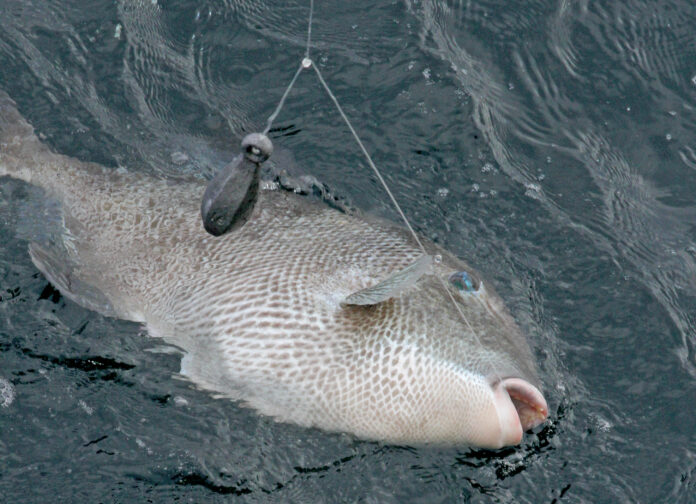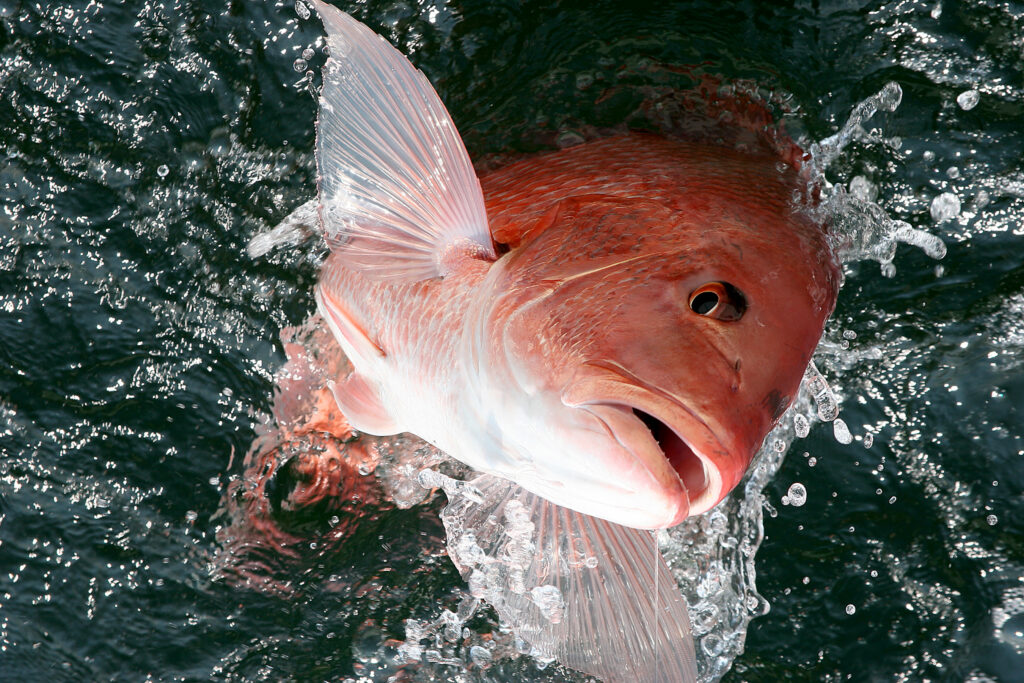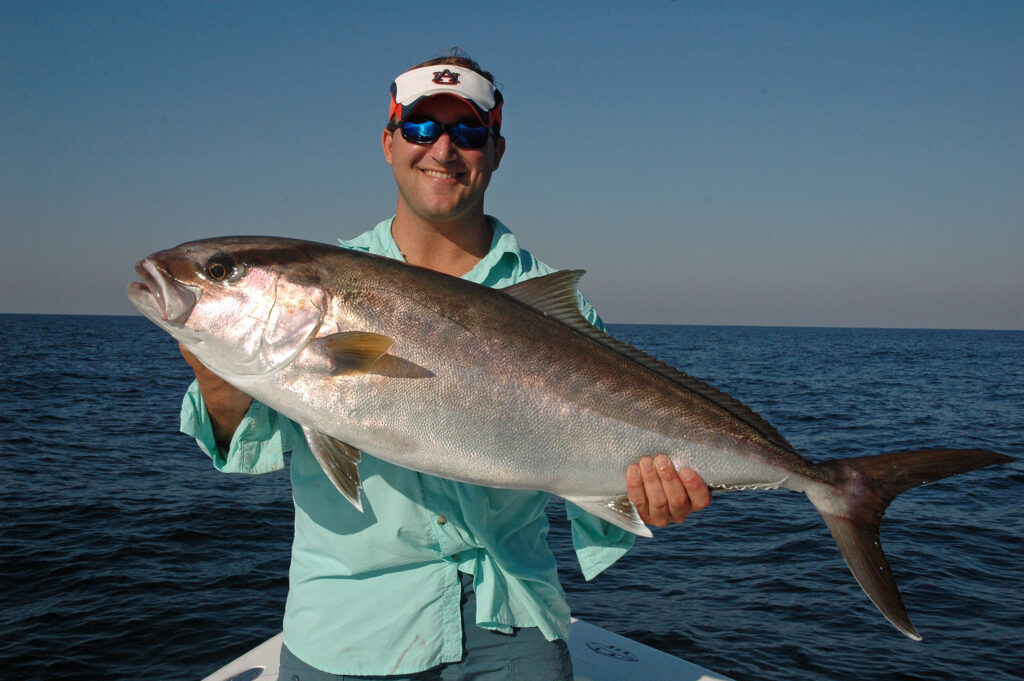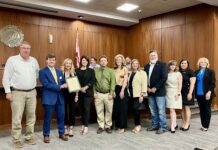
If you fish in Alabama coastal and/or offshore waters, the Alabama Department of Conservation and Natural Resources’ (ADCNR) Marine Resources Division (MRD) may soon ask for your help as it begins a pilot study in 2024 to gain data on recreational fishing effort for Alabama’s private anglers and state for-hire captains.
Alabama’s survey is similar to the effort survey currently used by the Louisiana Department of Wildlife and Fisheries to estimate the fishing effort for its saltwater anglers. The survey is a partnership among NOAA Fisheries, the Gulf States Marine Fisheries Commission and the ADCNR/MRD.
MRD will contact licensed anglers and for-hire captains weekly to gather fishing trip information from the previous week.
“Over the last few years as we moved to the state management of red snapper and looked at how some other species are federally regulated, Alabama and some other states have had concerns about how the federal surveys have gone, especially when it comes to effort, how many people are participating in a fishery,” said MRD Director Scott Bannon. “We feel that between the estimates of red snapper landings from the federal survey and Snapper Check, the Snapper Check estimates are much more representative of the amount of harvest occurring in Alabama. Fishing effort is where most of the difference between the two estimates comes from, and we feel like there are ways to estimate effort better.
“Florida has basically moved to its own system, and Louisiana and Texas have systems of their own. Mississippi and Alabama have chosen to have a trial year of 2024 to implement state data collection systems for all species. We’re going to do some side-by-side comparisons of the federal survey numbers compared to the states’ pilot survey numbers.”
Significant changes were made within NOAA Fisheries’ private recreational survey method in 2018. The largest of the changes was contacting individuals via mail from randomly selected mailing addresses in coastal states, which resulted in much higher estimates of fishing effort. Those higher estimates were large enough to cause concerns within the marine fisheries management community regarding the accuracy of Alabama saltwater fishing effort.
The biggest contention has to do with Alabama’s signature saltwater species – red snapper, which thrives off Alabama’s coast. Alabama has the largest artificial reef zone (www.outdooralabama.com/saltwater-fishing/artificial-reefs) in the United States with nearly 1,100 square miles designated for habitat enhancement. Beginning in 2012, the populations of red snapper and other popular reef fish have been estimated annually through research from the University of South Alabama’s School of Marine and Environmental Sciences. Recently, this research has been funded by anglers who purchase a Gulf Reef Fish Endorsement with their Alabama saltwater fishing license.
As many Alabama residents and offshore anglers remember, the Gulf states were granted state management of red snapper in 2018, which included using state data collection programs to monitor harvests. Along with small increases to the annual catch limit (quota), the red snapper seasons also increased since implementing state management. Bannon said that system worked very well. However, NOAA Fisheries insisted that harvest estimates from Mississippi, Florida and Alabama data collection programs be calibrated to recognize the difference between the federal effort surveys and the state surveys.
As a result of calibration, Alabama’s private recreational anglers had a 51% decrease in the 2023 red snapper quota. Alabama’s private recreational catch limit went from 1,122,662 pounds in 2022 to 558,200 pounds in 2023. For the 2024 season, MRD anticipates an increase in quota because of a calibration modification approved by the Gulf of Mexico Fishery Management Council (Gulf Council) in August 2023.

Alabama’s iconic red snapper is one species that will be covered by the MRD pilot survey. (Photo by David Rainer)
Bannon said that NOAA Fisheries, also known as the National Marine Fisheries Service (NMFS), has admitted its effort data might not be as accurate as once thought.
“The National Marine Fisheries Service recently came out with an announcement that their effort numbers for private recreational vessels in a subsample of East Coast states have been inflated by 30-40%, and they’ve known that since 2019,” Bannon said. “They have admitted the data they are presenting to us may not be accurate. So, our goal is to develop a more accurate system so we can make better management decisions.”
Bannon said the inaccuracy of the federal survey will be a topic of discussion at upcoming meetings of the Gulf Council. The Gulf Council meets Jan. 29 through Feb. 1 at the Hyatt Centric French Quarter in New Orleans, followed by a meeting April 8-11 at The Lodge at Gulf State Park in Gulf Shores, Alabama.
“Alabama has been in the forefront of reef fish management for the last decade,” said Conservation Commissioner Chris Blankenship. “We have shown through Snapper Check that data collection at the state level is much more accurate in the red snapper fishery and can better be trusted for management decisions. As we have said for years, the estimates of effort and catch coming from the federal MRIP program is just not reflective of what we all see in our state. Their own staff has now admitted their system is potentially flawed. This new state-led survey is what we need to do to take away more of the uncertainty of red snapper harvest as well as the other federally and state-managed species.”
Bannon said he wants anglers to be aware that those receiving a call for the pilot survey will see a 985 area code and the caller ID may say South Central Planning, the company hired to conduct the survey, which is the same company that is conducting the Louisiana survey.
“This will be a phone survey and email survey, and we want people to be aware of it, and we want people to participate, because we want to increase the accuracy and benefit the people of Alabama and all of the Gulf Coast,” he said.
Each week, a current list of licensed saltwater anglers and state-licensed for-hire captains will be used to randomly select a small group of anglers who will be contacted to ask about fishing trips finishing in Alabama in the prior week. Anglers and for-hire captains will be contacted by email first. If no email response is received within a day, telephone calls will be made over the next week. Surveys for private anglers will take very little time with only eight base questions to answer. Results from the private angler surveys will be sent from the contractor to MRD staff. State charter captains will be contacted by MRD staff and asked similar questions.
“Our goal is to provide an account of fishing effort,” Bannon said. “Effort (the number of fishing trips) is an integral part of the fisheries management equation.”
It is anticipated MRD staff will be able to produce effort estimates on a weekly basis, a notable improvement to the minimum of 45 days needed to generate estimates within the federal survey.
By using the list of licensed anglers to contact, the accuracy and precision of the calculated effort estimates will likely increase. As part of the pilot study, catch estimates will be calculated for several species of interest, including red snapper, and compared to NOAA Fisheries’ estimates.
“Although we intend to compare pilot survey estimates to federal survey estimates throughout 2024, it will take us until early 2025 to do the final comparisons,” Bannon said. “There is a possibility that we could continue the pilot survey in 2025 if preliminary results show significant differences and we are able to put the funding in place.
“We really want to urge those who are contacted to participate. As I always tell people, the more real data you put into these surveys and evaluations of fisheries, the better the answers. You’re making fewer assumptions when you have better answers. Our efforts and the cooperation of those who participate in the survey should help provide the best opportunities to participate in the commercial and recreational fisheries. If the pilot survey replaces the federal survey, it should positively affect everyone who fishes in the Gulf of Mexico as we make management decisions.”

The landing of a greater amberjack is another reef species that must be reported through the Snapper Check system. (Photo by David Rainer)





























